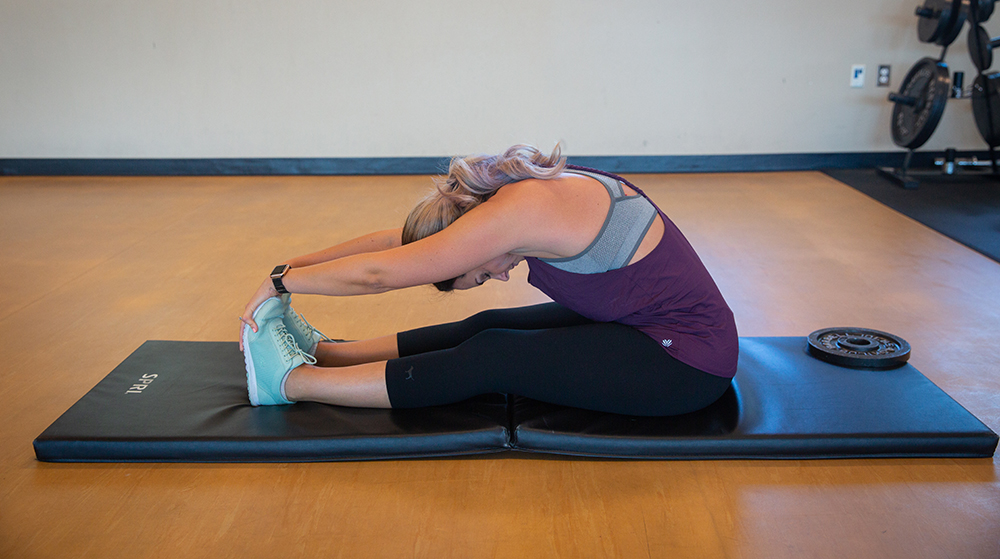Did you know around half of pregnant patients get leg cramps by their third trimester? Leg cramps tend to strike at night when you’re about to fall asleep. You might feel a sudden tightening of your muscle followed by a sharp pain.
Usually, leg cramps in pregnancy are nothing to worry about, however, sometimes they can be a sign of a more serious health problem. Let’s take a look at the common causes of leg cramps, how you can handle them at home and when to call the doctor.
Common Causes of Leg Cramps
There are many potential causes for leg cramps during pregnancy. They tend to show up in the second and third trimesters as your body is rapidly changing.
Low Vitamin or Mineral Levels
Why: During pregnancy, hormone and diet changes can decrease your calcium and magnesium levels.
Try This:
- Taking a prenatal vitamin can help. Get tips to find the best prenatal vitamins.
- Vitamin B complex supplements might also help with leg cramps.
- Eat food high in potassium, such as bananas, kiwi and spinach.
- Eat food high in magnesium, such as dark chocolate, avocados and nuts.
- Eat food high in calcium, such as seeds, cheese and salmon.
Circulation Changes
Why: Your blood volume will almost double during pregnancy. That can cause slower circulation, leading to swelling and cramping.
Try This: Here are a few tips for improving circulation during pregnancy:
- Sleep on your left side: This position takes pressure off your liver, which is on the right side of your body and helps improve circulation.
- Elevate your legs: Not only does putting your feet up reduce swelling, it also pushes blood flow back to your heart and lungs.
- Sleep with a pillow between your knees: This position helps facilitate blood flow through a major vein carrying blood to the heart and back. This position may also relieve stress.
- Stay active: If you sit a lot during the day, get up and walk around every couple of hours. Movement helps increase overall blood flow.
Dehydration
Why: Do you remember to drink enough water? Leg cramps are a common symptom of dehydration. Water keeps your body hydrated, making the heart’s job of pumping blood easier. The heart sends oxygen to your organs and muscles, reducing the likelihood of cramps and circulation problems.
Try This: While pregnant, you should drink 8-12 cups of water per day. Try adding a slice of fruit or low-sugar flavoring if plain water is too boring.
Muscle Fatigue and Weight Gain
Why: During pregnancy, you might already feel tired. That goes for your muscles, too. Some of that weak, heavy or tired feeling might be coming from the added weight of the baby. Some may be from gaining additional weight during pregnancy.
Your uterus is also putting extra pressure on your blood vessels. When the blood vessels in your legs and feet are strained, it can lead to increased leg cramps.
Try This: For this type of cramp, we recommend stretching before exercise and bed. Wearing compression socks also helps move the valves in your blood vessels closer together, keeping blood flowing better in the legs.
Staying active during pregnancy can help relieve and prevent leg cramps caused by weight gain. Work with your doctor or midwife to eat a healthy diet during pregnancy. The goal is to gain enough weight to nourish the baby, but not so much that it negatively affects your health.
Tips to Treat Leg Cramps at Home
Cramping muscles are no fun. Here are some safe at-home treatments you can try to reduce pain:
- Massage the cramping muscle and nearby muscle groups to release the tightened muscles to restore proper blood flow, oxygen and nutrients to the muscle.
- Gently hold your leg in a stretched position until the cramp stops. This lengthens your muscle fibers so they can properly contract and tighten, allowing your muscle’s oxygen supply to be restored.
- Rotate applying ice, to ease the pain of the cramp, and heat, to relax your muscle and increase blood flow.
- Soak in Epsom salt bath. When Epsom salt dissolves in water, it releases magnesium which plays a big role in muscle contraction.
Exercises to reduce leg pain:
- Ankle Pumps: Lie on your back with your feet slightly elevated. Point and flex your feet.
- Calf Stretches: Put one foot against the wall with your toes pointing up, brace yourself with your arms and lean toward your foot, keeping your leg straight.
- Good Mornings: Feet hip width apart, put your hands behind your head, with a slight bend in your knee, bend at your hips until you’re parallel to the floor or feeling a good hamstring stretch
When to See a Doctor
If leg cramps are keeping you awake at night and at-home treatments aren't working, talk with your doctor or midwife. They can prescribe safe medication to ease the pain and help you sleep.
Less commonly, some leg cramp symptoms are signs of deep vein thrombosis (DVT). This is a serious medical condition that can cause blood clots. Pregnant women are 50 percent more likely to get blood clots than non-pregnant women.
Call for help right away if you have any of these symptoms:
- Extreme leg pain when you stand up
- Severe, persistent or worsening leg cramps
- Very swollen legs
- Red spots that are warm to the touch
- Enlarged veins in the legs
If you are struggling with leg cramps during pregnancy, help is available. Talk to your doctor or midwife to discuss your options.

